When I started bird feeding, I knew I wanted to accomplish two things: Attract the Northern Cardinal and attract Blue Jays.
Blue Jays are eye-catching and intelligent birds that bring a lot of personality to your backyard or at your feeders. Outside of their loud screech-like calls, they mimic other bird calls, especially red-shouldered hawks. I also swear that I saw a Blue Jay mimic a dog barking at my feeders one time before grabbing a peanut. Fun fact! The Cornell Bird Lab says Blue Jays are credited with spreading the growth of oak trees after the last glacial period, due to their love of acorns!
A decent amount of birders classify Blue Jays as “bully birds” that hog feeders and harass other songbirds. In my experience, there’s little truth to this. While Blue Jays do make their presence known and can startle other birds, they tend to make short stops at my feeders, picking up several seeds and flying away with them.
Some people also claim that Blue Jays even destroy the eggs and nests of other birds, but a story by Audubon Society says this isn’t true or is extremely overblown at the very least. The story adds that Blue Jay couples tend to be monogamous and mate for life. They also stay in close groups as a family as their hatchlings grow.
“The Blue Jay’s family values make many other species look like barbarians!”
-The Audubon Society
So, If you want to bring this colorful, fun and bold bird to your yard, here are the things you need to know.
Disclaimer: Some links found on this page are Amazon affiliate links. If you click an affiliate link and make a purchase, I might earn a commission. As an Amazon Associate I earn from qualifying purchases. (There’s no extra cost to you if you do this).
1. Where to Find and Attract Blue Jays
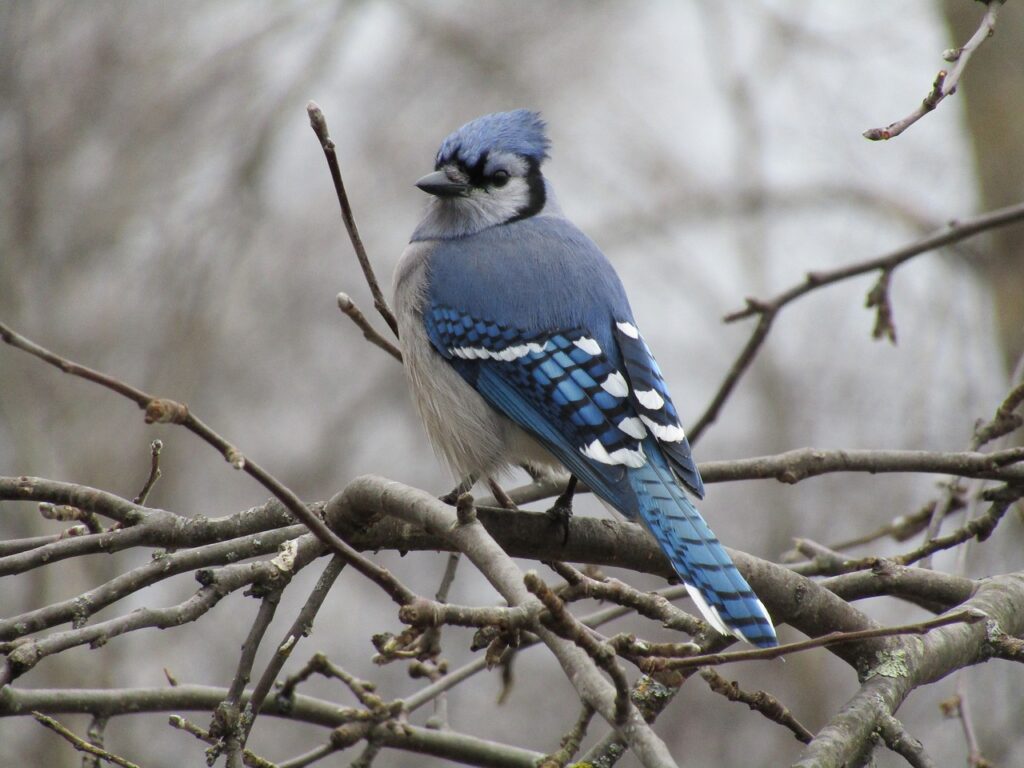
Blue Jays are year-round residents throughout the central and eastern regions of the United States and into southern Canada. Check the range map below. The purple area is their year-round range. The blue is during the winter only.
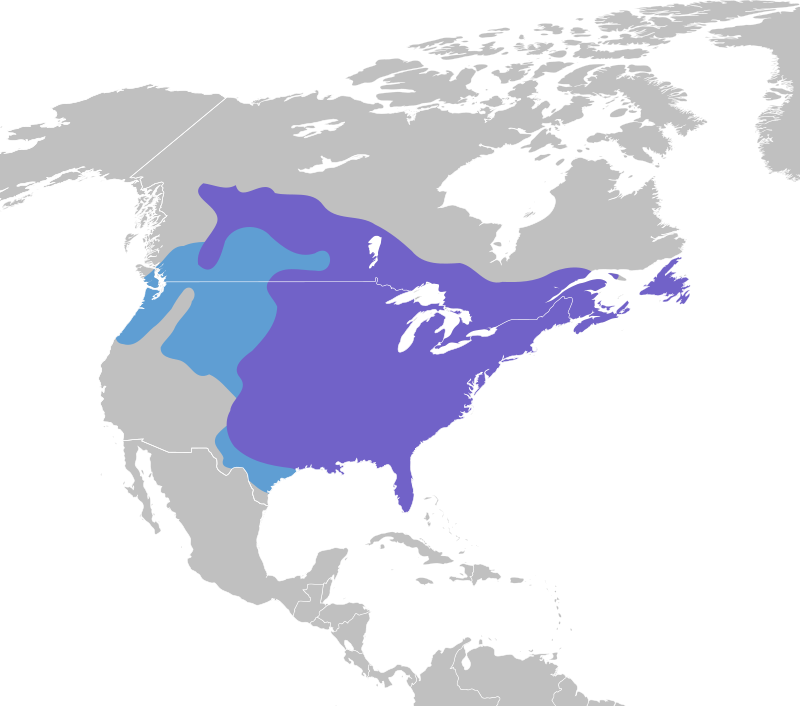
Blue Jays tend to live in the edges of forests and are common visitors in parks, cities, and backyards. They also forage in shrubs and on the ground looking for their favorite foods: Insects and seeds. They’re especially fond of acorns, so where there are oak trees, there will often be Blue Jays.
Related Content: 5 Unique Blue Jay Facts You Likely Didn’t Know
2. Attract Blue Jays With Food They Love – Peanuts!
What’s the best bird seed for Blue Jays? I’ve had the best luck offering the time-tested peanuts in the shell to Blue Jays straight from my apartment balcony railing. Peanuts are a good source of healthy fats and protein for birds and Blue Jays have large, strong beaks and can easily break into the shell. Check out the video above for proof. They go crazy for them!
Note: You need to buy un-salted, un-seasoned peanuts for bird feeding. Be sure to buy peanuts specifically made for birds or wildlife.
Whenever I put peanuts in the shell out, I feel like every Blue Jay in the neighborhood visits in a scramble to get one before the squirrels and chipmunks do. The sight of Blue Jays sampling each peanut to pick the heaviest one before swooping away is an entertaining sight.
De-shelled peanut bits also work well for me with Blue Jays. They will grab several of these before flying off. For some reason, though…I find that they go extra crazy for peanuts in the shell. Food for thought if you have a bird feeder with enough space. Other birds that enjoy eating peanuts at bird feeders include:
- Cardinals
- Chickadees
- Northern Flickers
- Nuthatches
- Tufted Titmouse
- Some Sparrow species
- Woodpeckers
They will also enjoy sunflower chips, mealworms, cracked corn, and suet but peanuts are the name of the game for them in my experience. Another fun route you can go with bird food that attracts both Blue Jays AND Woodpeckers are suet balls. Blue Jays gobble these up on my platform feeder, just like they would with peanuts!
Blue Jays are awesome to watch when they eat because they gobble up several seeds and stuff them into their throat pouch (called a gular pouch) before flying off. They can stuff up to five acorns in their throat at one time! I’m pretty sure that’s exactly how I ate back when I was a teenager.
Related: What’s the best bird seed for Cardinals?
3. The Best Blue Jay Bird Feeders – Get Something Sturdy!
Blue Jays are a large feeder bird, coming in between 9.8 to 11.8 inches.
Because of their size, you’re going to need a sturdy feeder to support their weight. The good news about investing in a feeder option to accommodate Blue Jays is that it will also be large enough to support bigger birds like Cardinals and Mourning Doves too.
My first recommendation for a Blue Jay bird feeder would be to set up a fly-through tray feeder on a sturdy post (if you have space for it).
Link to Purchase: JCs Wildlife Blue and Gray Large Fly Thru Bird Feeder with Removable Seed Tray
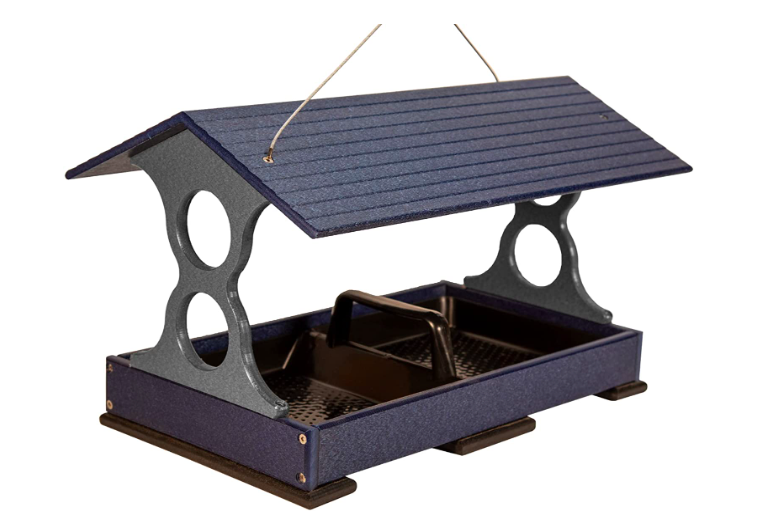
Here’s an example below of an easier to hang and set up platform feeder you can buy below that’s great for larger birds like Blue Jays (also: Cardinals, Doves, Finches).
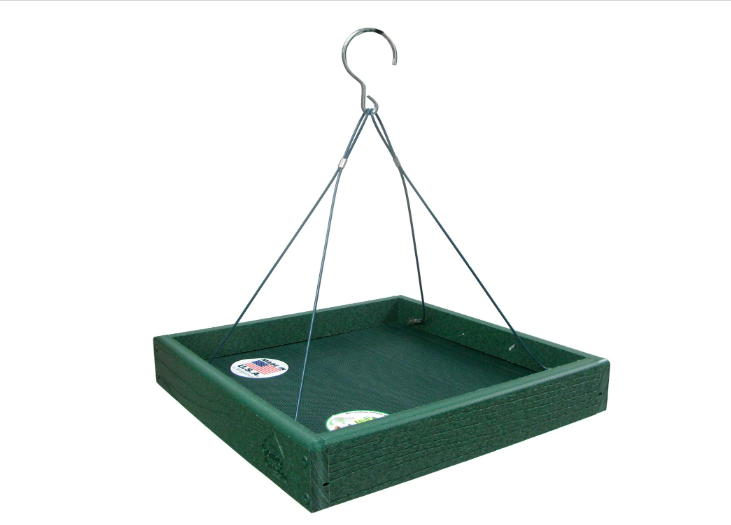
You can also have fun with a unique peanut-focused feeder. There are peanut wreath options like the one shown below that hold peanuts in the shell. It’s perfect for Blue Jays. Free entertainment watching them pluck peanuts out of it!
Link to Purchase: Peanut Bird Feeders
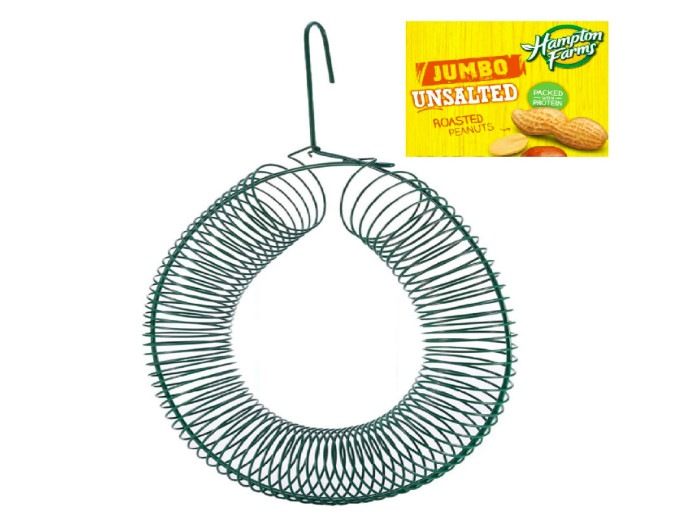
There’s also the route of the hopper feeder. I have Blue Jays visit my hopper feeder almost every day to stuff their throats with peanuts and sunflower chips! You’ll want to be sure to buy a sturdy and larger hopper feeder model, like this option below.
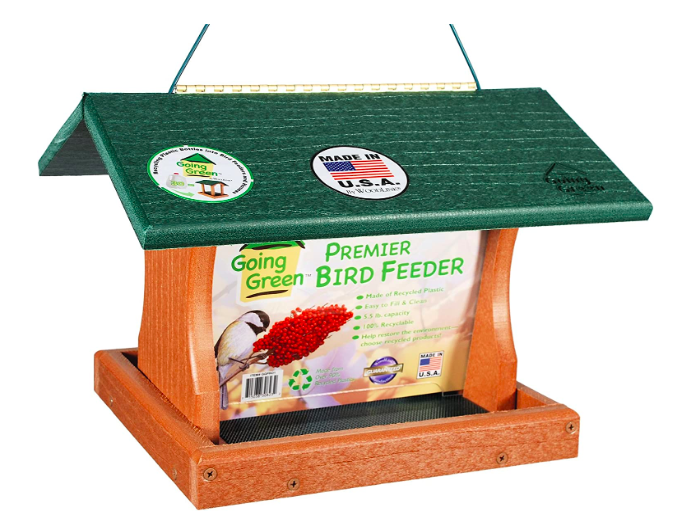
4. Offer Water – Especially in the Winter
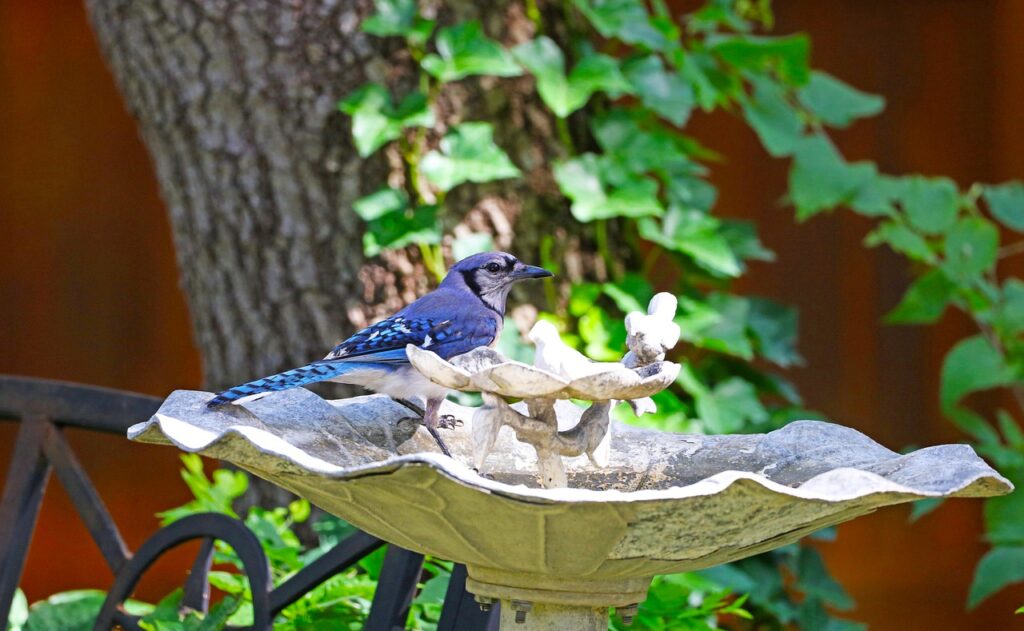
One of the best things you can do to bring more birds to your yard (including Blue Jays) is adding a bird bath, especially a heated option in the winter. If you’ve read my other blog posts this is becoming a repetitive point…because it’s true! Adding a bird bath to your yard will bring all sorts of species in. They all need water!
In the winter, you can also add in a bird bath heater to keep the ice away. Open water is hard to come by in the winter, so putting out a heated bird bath is almost certain to make your yard popular with a lot of birds!
5. Bonus Tip: Have Oak Trees in Your Yard
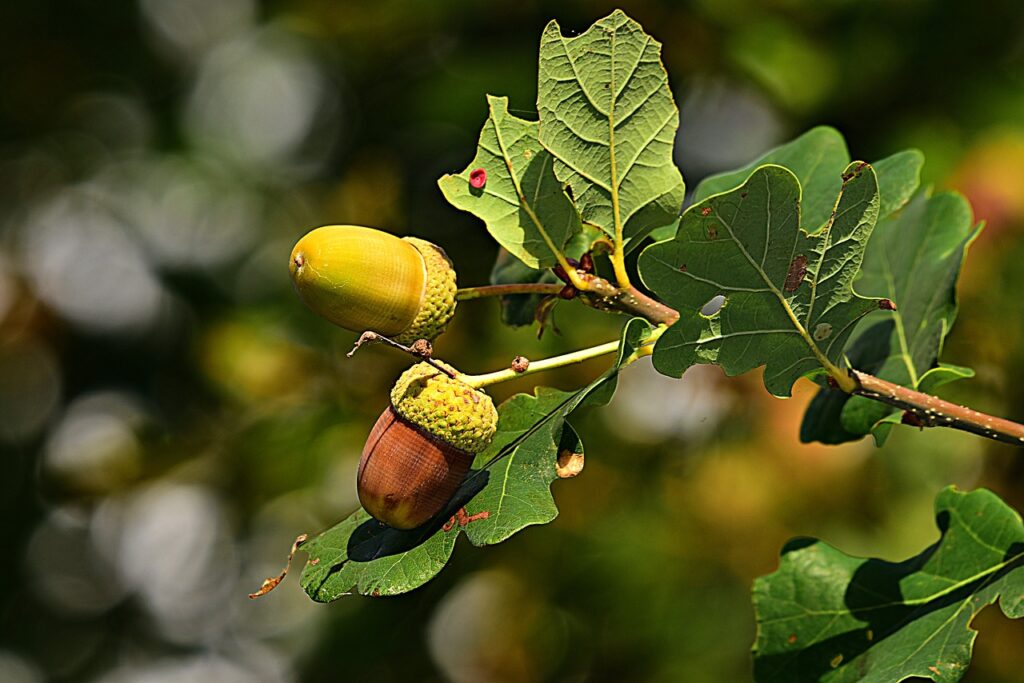
Acorns are a favorite natural food source for Blue Jays. They enjoy taking them and caching them in hiding spots. If you have an oak tree or plant one in your yard, this is a long-term game-changer for bringing them to your neighborhood!
To wrap up. If you want to attract Blue Jays to your feeder, here’s my game plan:
- Buy peanuts (in the shell is your best bet)
- Bonus: You can also buy sunflower seed, mealworms, cracked corn and suet nuggets
- Put them in a sturdy feeder big enough for them
- Provide water
- Bonus: Have acorns in your yard
What tips have worked well for you to bring Blue Jays to your yard? Leave a comment or suggestion below! I hope this article will help you draw in these colorful and boisterous birds to your feeders. It’s well-worth it for the variety personality these birds bring!

We are huge Blue Jays fan, partly because we live in Toronto and love baseball, and partly because they are beautiful birds.
I’m also a Blue Jay’s baseball fan. They were fun to watch last year! Thanks for dropping by, Eva!
Pingback:Birds Choice Cedar Hopper Feeder Review – Should You Buy It? - BIRD BITES
Pingback:11 Awesome Hummingbird Feeders You Can Buy on Amazon - BIRD BITES
Pingback:3 Easy Tips to Prevent Birds from Flying Into Your Windows - BIRD BITES
Pingback:5 Unique Blue Jay Facts You Didn’t Know - BIRD BITES